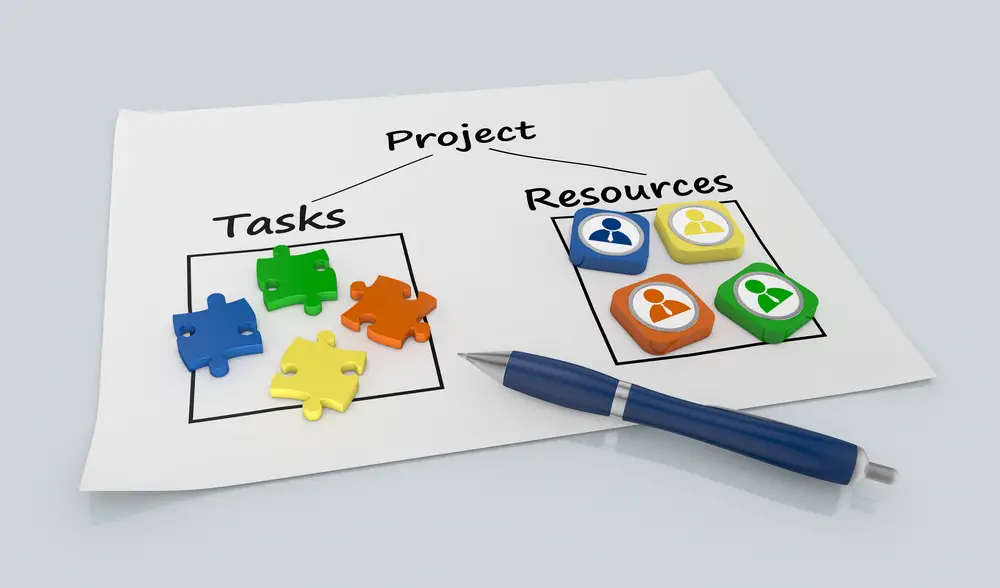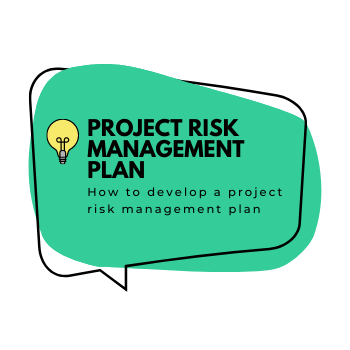It’s important to understand that the purpose of a successful project risk management plan is not just to protect against potential problems but also to create opportunities for success. A good plan will not only save potential issues but also create opportunities for success. Read on to find out how you can turn your project into a big success with the right kind of risk management plan!
Risk Management is a part of project management. It is also a discipline within business and engineering to identify, assess and control the risks associated with projects. In technical terms, Risk management is defined as “identifying, assessing and controlling the risk of those events which could prevent the achievement of one or more objectives.”
Project managers face many challenges in today’s workplace, especially when it comes to managing risks associated with projects. Understanding key terms and their implications is essential in order to ensure successful project outcomes. Two of the most important documents used by project managers are the sample risk management Plan pmp Risk Register and the Risk Report.
The purpose of the PMP Risk Register vs risk report is to document all identified risks, while the Risk Report outlines how they will be managed during risk assessment. A comprehensive risk management plan should also be developed which will identify potential threats, develop a strategy for dealing with these risks, and delineate timelines for addressing them.
Common project risks include time delays, budget overruns and communications breakdowns. To help manage the most common project risks in an efficient manner, many organizations are now leveraging project management software solutions. These powerful tools help make tasks such as identifying potential risks easier
What is Included in the Project Risk Management Plan?
The project risk management plan will provide the following scope of items:-
Organization
The project risk management plan typically includes the organizational framework, communication program, risk register, mitigation plans. It describes how the risk management team, group, and organization will execute their project risk management plan.
The organizational structure is vital to any implementation and implementation of a project risk management plan. The organizational element should be able to provide support throughout the implementation phases and depending on the size of the project. The organizational element should also be able to provide support to the risk management team throughout the life of the project and before and after implementation phases.
Organizational support should come from a group or individual assigned as a leader for the project risk management plan. This person or group should have clear communication channels with all parties involved for regular updates on how they are executing their project risk management plan.
Communication is integral in all phases of the project, but especially during the implementation phase. A communication program should be set up that allows for regular updates on how the risk management team is approaching its risks and receive feedback from other parties involved to modify their plan when needed.
The risk register is a list of all potential risks that could arise during the implementation of the project, as well as any other task related to the implementation phase. This list should be updated on an ongoing basis, considering new tasks are added and old ones completed throughout the implementation phase. Any risks that were considered but could not be mitigated should also be noted in the risk register and also key risk indicators.
The project team creates mitigation plans to address risks listed in the risk register. The mitigation plan should include an overview of possible ways to mitigate or avoid each risk, when they will be implemented, and who is responsible for ensuring the implementation. The mitigation plans should be time-phased to allow for regular updates.
Organizational support, communication program, risk register, and mitigation plans are all vital to the success of the project risk management plan. When these four things are set up correctly, any project can benefit by having a solid plan to deal with risks that could arise in the project.
Ownership
It is the condition of being responsible for something and its outcome. In project management, ownership has a different meaning: it is determined by who stands to benefit from the project work and who will be accountable for its result.
A project can have one or many owners; alternatively, some projects may not have an owner (e.g., public-sector projects) or multiple owners. All team members involved in its delivery are responsible for the project not being in a fit state at handover to the owner (or subsequent owners). However, the ultimate responsibility lies with the project manager.
Project owners are responsible for determining the direction of the project. Their role is to understand and define what needs doing, why it needs doing when it should be done by and how much it will cost. The project manager is responsible for executing this plan in a way that meets stakeholder expectations.
Owners will provide resources to deliver the project according to its business case and will expect results in return. Quality management includes acquiring the appropriate resources to produce the required result, managing risks, performing tasks within budget and on schedule, meeting stakeholder expectations, producing outputs that are fit for purpose, meeting quality standards.

Risk categories(high,medium,low)
List all risks, including high risk, medium risk, and low risk. Provide a rationale for each category. For each chance, indicate who is accountable for monitoring the risks and taking corrective actions if necessary. In the plan, consolidate risk categories and rank the risks according to a three-phased listing approach.
After the enumeration of risks, address risk mitigation strategies for identified project risks. Examples of high risks may include:-
● Changes in economic conditions that may limit the availability of critical resources required to complete project implementation
● Failure of government agencies involved in implementation to provide timely approvals and support
● The ability of project staff and local communities to work together towards a common goal
● Failure of consultants to produce work products/deliverables as expected
Mitigation strategies for each identified risk. Example mitigation strategies may be the following:-
● Economic conditions- Integrate contingency plans within schedule and budget to address changes in economic conditions that may limit the availability of critical resources required to complete project implementation
● Government agency- Coordinate with government agencies to determine their needs and develop a process for gaining approval on time
● Project staff & community- Integrate training in working together towards a common goal
● Consultants- Identify key deliverables; work with the consultant team to ensure the right expertise is on the team; include specific deliverables and deliverables dates in the contract.
For each risk identified, develop a risk monitoring and response plan. Identify who is accountable for monitoring the risks and taking corrective actions if necessary. Address how the project will be monitored; include frequency of updates per phase; identify critical parameters to monitor (i.e., financial); list all reporting requirements; have when corrective actions will be taken and who will take them.
Identify the risks related to technology and develop a risk monitoring and response plan for each risk in this category. Identify who is accountable for monitoring the risks and taking corrective actions if necessary. Address how the project will be monitored; include frequency of updates per phase; identify critical parameters to monitor (i.e., financial); list all reporting requirements; have when corrective actions will be taken and who will take them.
Project-specific procedures
Project procedures are included in the risk management to outline the identified project risks and how they will be managed. Procedures may include but are not limited to: Risk management plan approval process, the addition of risk register entries, How new risks are identified, Risk identification criteria, Risk response strategies, Risk mitigation approaches, Risk transfer alternatives, Role of the project manager in risk management, Role of other roles in risk management, a Communication plan for risks.
Project-specific procedures are required, so the entire project team understands how to manage the identified project risks. If you don’t define it upfront, how will people know what to do when they are in the middle of an issue? These procedures should only include the project-specific information that will be needed when managing risk. The bulk of your project’s risk management plan will likely be contained in other documents.
Risk Management Planning is a key component of the Project Management Plan (PMP), as it outlines the process to identify, assess, and respond to potential risks that may arise during the course of a project. The Risk Management Process involves several steps such as identifying risks, analyzing them with quantitative risk analysis techniques, and creating risk response planning.
It also involves developing procedures for monitoring risks throughout the duration of the project. By involving a comprehensive set of risk management activities into the PMP plan, organizations can ensure they have access to detailed information regarding their exposure to various types of risks and develop strategies to mitigate those risks.
Using organizational process assets such as past records and documents related to similar projects can help in forming a sound Risk Management Plan. Additionally, having an effective communication strategy among team members is essential in order to ensure that issues related to risk management are addressed efficiently.
In summary, by implementing a solid pmp Risk Management Plan and following strict processes for all associated activities, organizations can enjoy enhanced control over their projects and increase their chances for success.

Reporting & Monitoring
The project risk management plan includes details about how risks will be monitored and reported. It is essential to monitor threats to stay on top of what’s going on because this gives you up-to-date information about where risks are popping up. The data from monitoring should be included in the risk register so that the project team can see where to focus their attention.
The project manager is responsible for monitoring risks, but they may choose to delegate some of this responsibility to one or more team members. Or, if there are formalized reporting procedures in place (i.e., a system for reporting risks to management and stakeholders), the project manager can delegate the monitoring task.
If there is no team or formalized reporting procedures in place, it will be up to the project manager to monitor risks independently. Once again, if there are formalized reporting procedures (i.e., a system for reporting risks to management and stakeholders), the project manager can choose to delegate the monitoring task.
It is good to have a set time that you will follow each week or month to monitor through the risk log and register. It allows team members to quickly look back at what happened when they are completing the risk report.
Risk monitoring usually involves looking at all the risks in the register, updating their status, and documenting any changes. The project manager can choose to look for specific types of information when monitoring, such as whether the likelihood or impact has changed significantly over time or if any new risks have emerged. Monitoring thresholds should be determined in advance to ensure consistency and accuracy.
A risk log is a powerful tool because it can let you know what has happened over time with each identified risk. For example, suppose there is a high likelihood that an outpost will need to be built due to bad weather. In that case, the number of instances where this occurred during the monitoring period should be tracked to determine if the risk is being realized.
Shifts in risk frequency or impact can significantly impact your project, so it’s vital to capture this information when monitoring risks. It may become necessary to adapt the project plan to deal with these emerging issues, so you want to be aware of them.
It is a good idea to present risk monitoring information so that everyone understands, whether it’s a chart, table, list, or report. The information should be presented with the date of the risk activity and what was done (i.e., reviewed risks from last week). It will help stakeholders know what goes into the monitoring process, knowing what to expect when you present your risk report.
Project-specific documentation
In the Project risk management plan, project-specific documentation must be included in general risk management guidelines. The documentation in this plan should be tailored towards the project, the industry in which it is situated, and its needs; no two projects will ever require precisely the same level of detail in their PM plans ( PMBOK 6th ed., p. 545).
To determine what project-specific documentation will be needed to accommodate a given project, the PM should consider the project’s scope and how it will affect other areas. The project risk management plan should specify how risks will be identified and handled within the confines of time, resources, and quality factors. It also needs to include risks unique to the project at hand; possible risks are given to the industry, foreseen risks before the task began, and any other potential issues.
The PM should consider how to communicate this plan with the project team, depending on their size. Never assume that all employees will read or fully understand details in a document; if they are too far removed from the risk management process, they may not contribute anything worthwhile. At the same time, if everyone involved in this plan is too close, their critical thinking abilities will likely suffer.

Cost-benefit analysis
The project risk management plan needs to include a section about cost-benefit analysis. The cost-benefit examination assesses the benefits received through executing a project against the costs involved. Benefits could be anything from savings made to revenue raised. Costs are usually associated with resources needed to complete tasks within a project, e.g., people, materials, software licenses.
Additionally, this section should address any costs or potential losses associated with not completing the project. It is important to note that cost-benefit analysis only assesses the existing projects within the organization and does not include future projects which may be thought of in the future. For this reason, the project risk management plan should include a section detailing how to evaluate and assess new ideas or projects.
It is crucial to define the cost-benefit analysis in the project risk management plan before further determining how this will be accomplished. This section should explain whether the organization usually uses this type of evaluation. Defining when this type of analysis might be better categorized as an opportunity cost analysis would be helpful. It may be questionable whether this is an appropriate method for specific projects; it would be beneficial to clearly define what factors make this type of analysis more suitable than other evaluation methods.
This section should also include any assumptions made during the process and how these will affect the outcome. For example, there has been much debate surrounding cost-benefit analysis when looking at projects involving social costs and benefits. Undertaking a project that has a less than positive effect on an individual, but which results in social benefits (e.g., building new roads) may be seen as unethical by some, and therefore not fit for the desired goal of having an ethical organization, if it has a high cost-benefit ratio. It is essential to address any factors like this during the risk management plan; they may pose further questions about whether or not specific projects should be completed.
This section will also need to include any limitations of the method and how these will affect the outcome. For example, it is challenging to have intangible items, such as happiness or wellbeing, into a cost-benefit analysis. Defining the extent of these limitations will help shape how this type of evaluation is viewed compared to other methods used by the organization.
Including all of the above information within the project, a risk management plan is essential. It clearly defines what cost-benefit analysis entails and what is expected to complete the document.
Conclusion
Developing a project risk management plan is one of the essential parts of any successful business. A good risk management plan can help you protect against potential problems and create opportunities for success, but it’s not always easy to know where to start or what goes on in a completed project risk management plan. To give yourself an idea, we created this blog post on developing a solid project risk management plan that will work well with your business goals and objectives. We hope you enjoy it.
Have you read ?
Key risk indicators in project management
Steps to managing risk for your project
Role of risk management in project management
Chris Ekai is a Risk Management expert with over 10 years of experience in the field. He has a Master’s degree in Risk Management from University of Portsmouth and is a CPA and Finance professional. He currently works as a Content Manager at Risk Publishing, writing about Enterprise Risk Management, Business Continuity Management and Project Management.

